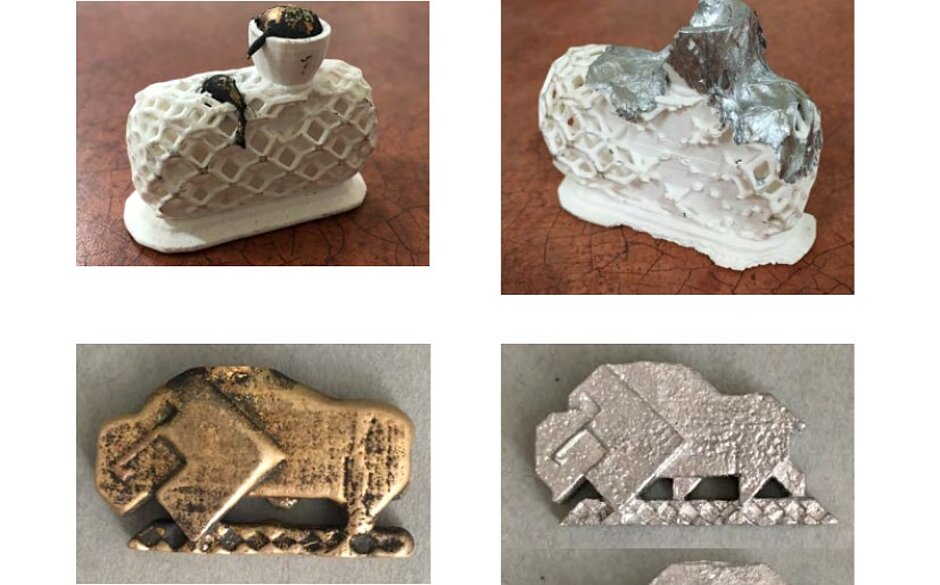Tethon3D, a manufacturer of ceramic powders and photocurable materials has launched its new Castalite Investment Casting resin for SLA and DLP 3D printing.
Castalite, like other resins, has applications in advanced manufacturing, jewellery and engineering. However, thanks to its physical qualities, it can also be used to 3D print ceramic shell molds for metal casting.
A resin for metal casting
Chemically, Castalite has high heat and thermal shock tolerances, giving it the necessary qualities to cast metals such as bronze, gold, silver, and aluminium.
3D printed molds require a sprue, gate and casting cups are functional. If these features are incorporated into the mold design, it will be ready to receive molten metal.
Once a mold has been 3D printed using Castalite resin, it must then be fired slowly between 300 and 1,100 degrees Fahrenheit (150 to 595 degrees Celsius) to allow excess gases to escape and prevent it cracking.
Using Castalite to directly 3D print a mold eliminates the need for the wax models used in the traditional lost wax casting. This reduction in material ultimately reduces the cost of metal casting and makes it faster.
An artistic and technological growth in ceramic 3D printing
Nebraska-based Tethon3D has extensively collaborated with practitioners who produce ceramic artworks. It released Vitrolite, a glass ceramic polymer resin for SLA printing, in 2017. Tethon3D’s Porcelite material was nominated for a 2017 3D Printing Industry Award in the “3D printing material of the year” category.
Karen Linder, President and CEO of Tethon 3D was confident in the popularity of the Castalite resin, citing a “growth seen in SLA and DLP hardware,” which 3D printing has also looked at in the trends in additive manufacturing for end-use production series.
“Recent improvements in 3D printer technology provide higher resolution details in the casted metal part and faster print times,” said Linder. “Most printers can print at 25-micron print layers and Castalite demonstrates excellent resolution at that level.”
Source: 3dprintingindustry.com
×


